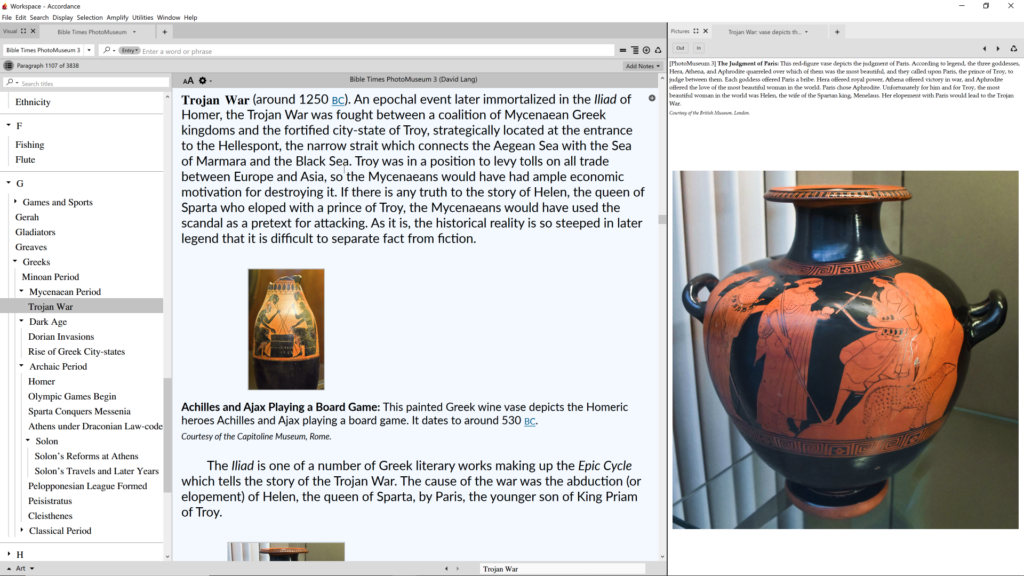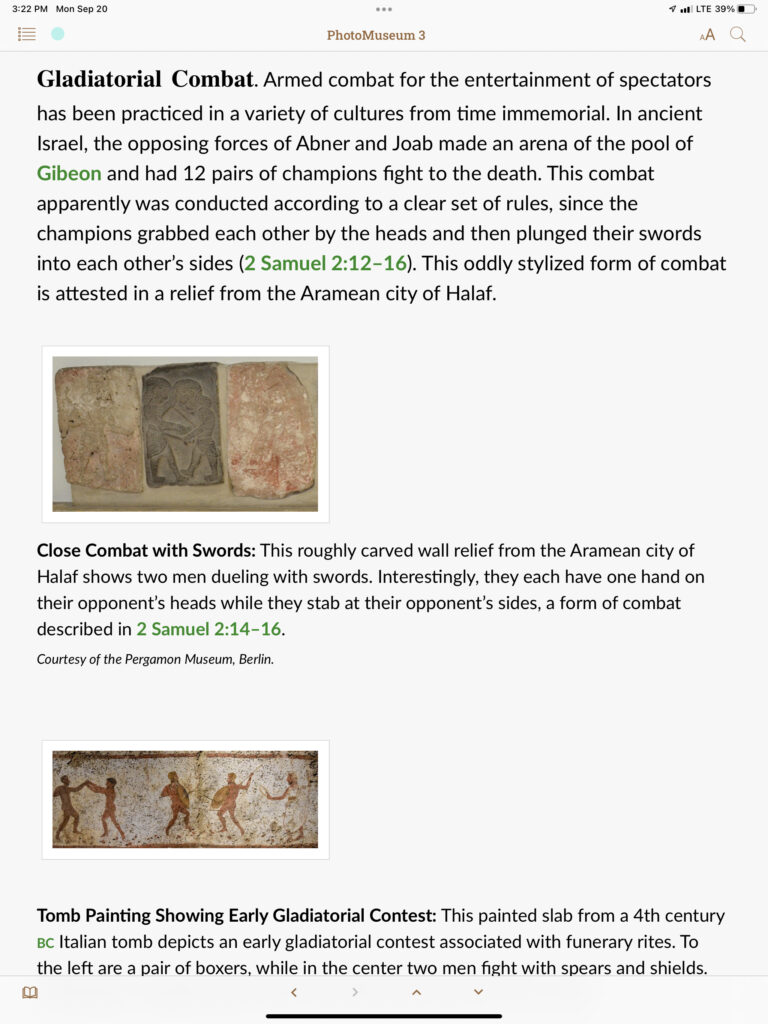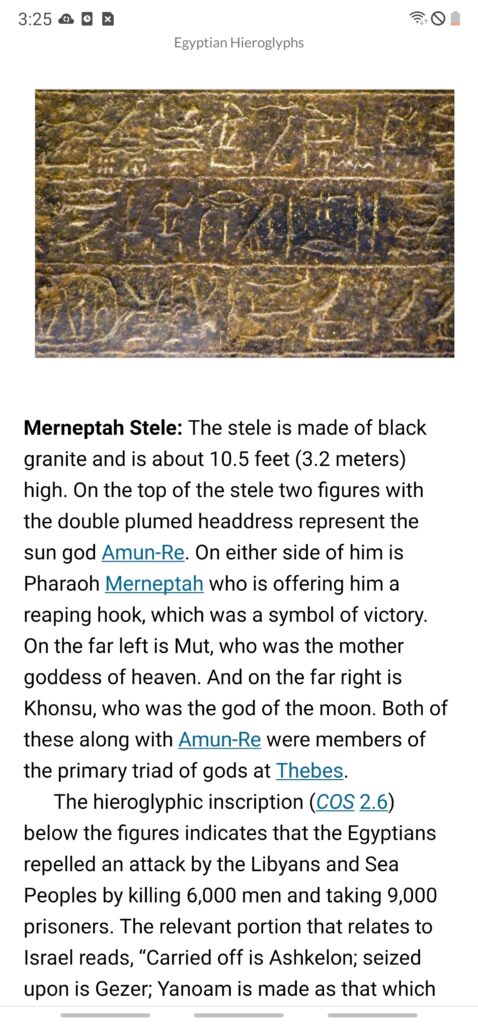When we first released the Accordance Bible Times PhotoMuseum, I wrote a blog announcement entitled, “What in the World is a PhotoMuseum?” Now that we’re releasing a third edition of the PhotoMuseum, with 250 new articles and nearly 350 new images, now seems a good time to revisit the question. What exactly is a “PhotoMuseum”? What is it good for? Why should you buy it?
The Original Concept. The PhotoMuseum was originally conceived as presenting information and images of ancient artifacts in the same way our Bible Lands PhotoGuide presented geographical locations. In it, you’ll find copiously-illustrated articles on altars, anchors, armor, boats, bricks, coins, etc. Of course, all these ancient objects are important because they help us understand ancient worship, commerce, warfare, and so on, so the PhotoMuseum also contains articles on those broader subjects.
PhotoMuseum 3 article on Gladiatorial Combat
A Companion to the Timeline. In the process of developing the first edition of the PhotoMuseum, it occurred to me that since the PhotoGuide is designed to be a custom companion to the Accordance Bible Atlas, the PhotoMuseum should become a custom companion to the Accordance Timeline. I therefore began adding articles on individual rulers and historical events, so you could double-click those items in the Timeline to get relevant descriptions and images in the PhotoMuseum.
A Launching Pad to Further Study. The new PhotoMuseum 3 includes numerous links to other Accordance resources so you can take your study even further. Most place names are linked to the PhotoGuide-Overview. Where there is debate about biblical chronology, such as the date of the Exodus, there are links to the relevant discussions in Eugene Merrill’s Kingdom of Priests, the source for the Conservative dating scheme of the Accordance Timeline. (Merrill usually summarizes the arguments for Critical dates as well.) There are also links to interesting discussions in Carta’s Sacred Bridge, Biblical Archaeology Review, and similar resources.
A Guide to Ancient Peoples, Cultures, and Historical Figures. For each ancient people group covered by the PhotoMuseum (Ammonites, Arameans, Canaanites, Egyptians, Hittites, etc.), there is a general article which details that people’s history and culture. Most also include a subarticle exploring the religion of that people. There are also articles for each group’s individual rulers. Links from one article to the others make it easy to dive deep into a particular people group.

A Catalog of Important Inscriptions. By far the most important archeological finds are those which contain written inscriptions, and the PhotoMuseum 3 features lots of images of ancient steles, reliefs, ostraca, cylinders, and seals inscribed with cuneiform, hieroglyphic, and alphabetic scripts. It’s nice to see images of all those inscriptions, but wouldn’t it be great if you could actually read them?
The Merneptah Stele with link to Context of Scripture
Accordance offers a number of excellent resources which contain ancient inscriptions in the original language and in translation. Just last week, we released the four-volume edition of The Context of Scripture (COS). COS has so much material it can sometimes be hard to know where to begin. In addition to COS, we offer Carta’s Echoes From the Past and Raging Torrent, as well as our own Hebrew Inscriptions and Northwest Semitic Inscriptions modules (which are available as a bundle). Since we have all this material available, PhotoMuseum 3 includes links to all these resources from the images of most inscriptions. That way, you can read those inscriptions yourselves and deepen your understanding of the Bible.
If you own some or all of these inscriptions resources, you’ll find yourself consulting them far more often if you follow the links from the PhotoMuseum.
So what exactly is a PhotoMuseum? It’s a multi-faceted resource you’ll soon be mining for images, jumping to from the Timeline, reading for insight into the biblical world, and jumping from to other Accordance resources. All that for the current sale price of just $49.90? How can you go wrong?



